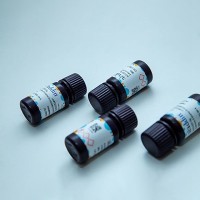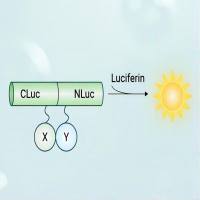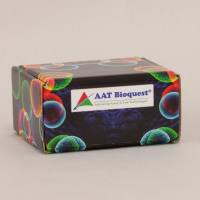Live Imaging of the Lung
互联网
- Abstract
- Table of Contents
- Materials
- Figures
- Videos
- Literature Cited
Abstract
Live imaging is critical to determining the dynamics and spatial interactions of cells within the tissue environment. In the lung, this has proven to be difficult due to the motion incurred by ventilation and cardiac contractions. In this chapter, we report protocols for imaging ex vivo live lung slices and the intact mouse lung. Curr. Protoc. Cytom. 60:12.28.1?12.28.12. © 2012 by John Wiley & Sons, Inc.
Keywords: intravital imaging; lung imaging; lung slices; two?photon microscopy
Table of Contents
- Introduction
- Basic Protocol 1: Live Imaging of Lung Slices
- Support Protocol 1: Staining Lung Sections with Fluorescent Antibodies
- Basic Protocol 2: Live Imaging in the Mouse Lung
- Support Protocol 2: Intratracheal and Intravascular Instillations
- Reagents and Solutions
- Commentary
- Literature Cited
- Figures
Materials
Basic Protocol 1: Live Imaging of Lung Slices
Materials
Support Protocol 1: Staining Lung Sections with Fluorescent Antibodies
Materials
Basic Protocol 2: Live Imaging in the Mouse Lung
Materials
Support Protocol 2: Intratracheal and Intravascular Instillations
|
Figures
-
Figure 12.28.1 Protocol for preparing lungs for slice imaging. (A ) Catheter inserted in the trachea is stabilized with suture. (B ) Lungs filled with 1 ml low melting temperature agarose. (C ) Left lobe mounted on a Vibtratome block with Vetbond. (D ) 300‐µm section immobilized on a plastic coverslip. View Image -
Figure 12.28.2 Motility of c‐fms‐EGFP+ cells in lung sections. (A ) Actin‐CFP c‐fms‐EGFP lung slice shows motility of cells within the tissue with overlaid tracks. (B ) Quantification of c‐fms‐EGFP cells shows increased motility near the airway. View Image -
Figure 12.28.3 Staining of Lyve‐1 and CD31 in lung slices. Lung sections stained as in show Lyve‐1 (blue) and CD31 (red). View Image -
Figure 12.28.4 Surgical preparation for lung intravital microscopy. (A ) Anterior and posterior views of the thoracic suction window fitted with a coverslip. (B ) Side‐view rendering of the suction window showing suction chamber, cover slip (green arrows), and vacuum flows (blue arrows near tissue, red arrows toward suction regulator). (C ) Surgical preparation of left thorax with exposed left lung. (D ) Suction window in situ. Scale bars, 5 mm (B ), 10 mm (C,D ) (Looney et al., ). View Image
Videos
-
Neutrophil and macrophage motility in lung sections.0:08Play Video
-
Simultaneous imaging of neutrophil and bead velocities in the mouse lung.0:33Play Video
Literature Cited
| Bergner, A. and Sanderson, M.J. 2002. Acetylcholine‐induced calcium signaling and contraction of airway smooth muscle cells in lung slices. J. Gen. Physiol. 119:187‐198. | |
| Dandurand, R.J., Wang, C.G., Phillips, N.C., and Eidelman, D.H. 1993. Responsiveness of individual airways to methacholine in adult rat lung explants. J. Appl. Physiol. 75:364‐372. | |
| Donovan, J. and Brown, P. 2006. Parenteral injections. Curr. Protoc. Immunol. 73:1.6.1‐1.6.10. | |
| Hasegawa, A., Hayashi, K., Kishimoto, H., Yang, M., Tofukuji, S., Suzuki, K., Nakajima, H., Hoffman, R.M., Shirai, M., and Nakayama, T. 2010. Color‐coded real‐time cellular imaging of lung T‐lymphocyte accumulation and focus formation in a mouse asthma model. J. Allergy Clin. Immunol. 125:461‐468. | |
| Kiefmann, R., Rifkind, J.M., Nagababu, E., and Bhattacharya, J. 2008. Red blood cells induce hypoxic lung inflammation. Blood 111:5205‐5214. | |
| Kreisel, D., Nava, R.G., Li, W., Zinselmeyer, B.H., Wang, B., Lai, J., Pless, R., Gelman, A.E., Krupnick, A.S., and Miller, M.J. 2010. In vivo two‐photon imaging reveals monocyte‐dependent neutrophil extravasation during pulmonary inflammation. Proc. Natl. Acad. Sci. U.S.A. 107:18073‐18078. | |
| Kuebler, W.M., Ying, X., Singh, B., Issekutz, A.C., and Bhattacharya, J. 1999. Pressure is proinflammatory in lung venular capillaries. J. Clin. Invest. 104:495‐502. | |
| Looney, M.R., Thornton, E.E., Sen, D., Lamm, W.J., Glenny, R.W., and Krummel, M.F. 2011. Stabilized imaging of immune surveillance in the mouse lung. Nat. Methods 8:91‐96. | |
| Miller, M.J., Wei, S.H., Parker, I., and Cahalan, M.D. 2002. Two‐photon imaging of lymphocyte motility and antigen response in intact lymph node. Science 296:1869‐1873. | |
| Su, X., Looney, M., Robriquet, L., Fang, X., and Matthay, M.A. 2004. Direct visual instillation as a method for efficient delivery of fluid into the distal airspaces of anesthetized mice. Exp. Lung Res. 30:479‐483. | |
| Tabuchi, A., Mertens, M., Kuppe, H., Pries, A.R., and Kuebler, W.M. 2008. Intravital microscopy of the murine pulmonary microcirculation. J. Appl. Physiol. 104:338‐346. | |
| Wagner, W.W. Jr. 1996. Pulmonary microcirculatory observations in vivo under physiological conditions. J. Appl. Physiol. 26:375‐377. | |
| Key References | |
| Looney et al., 2011. See above. | |
| This reference describes in detail the methods needed for two‐photon, intravital microscopy in the lung. |







